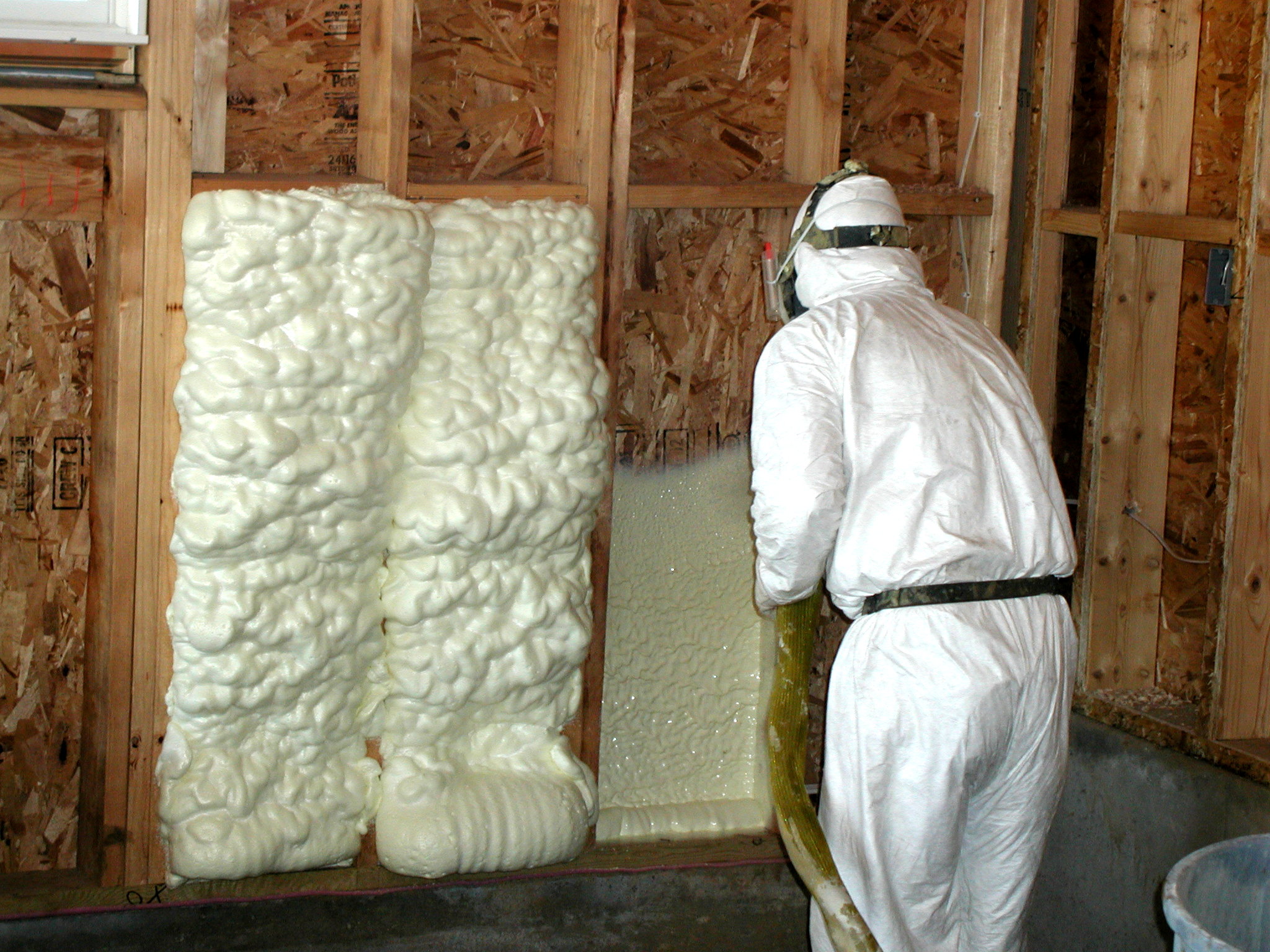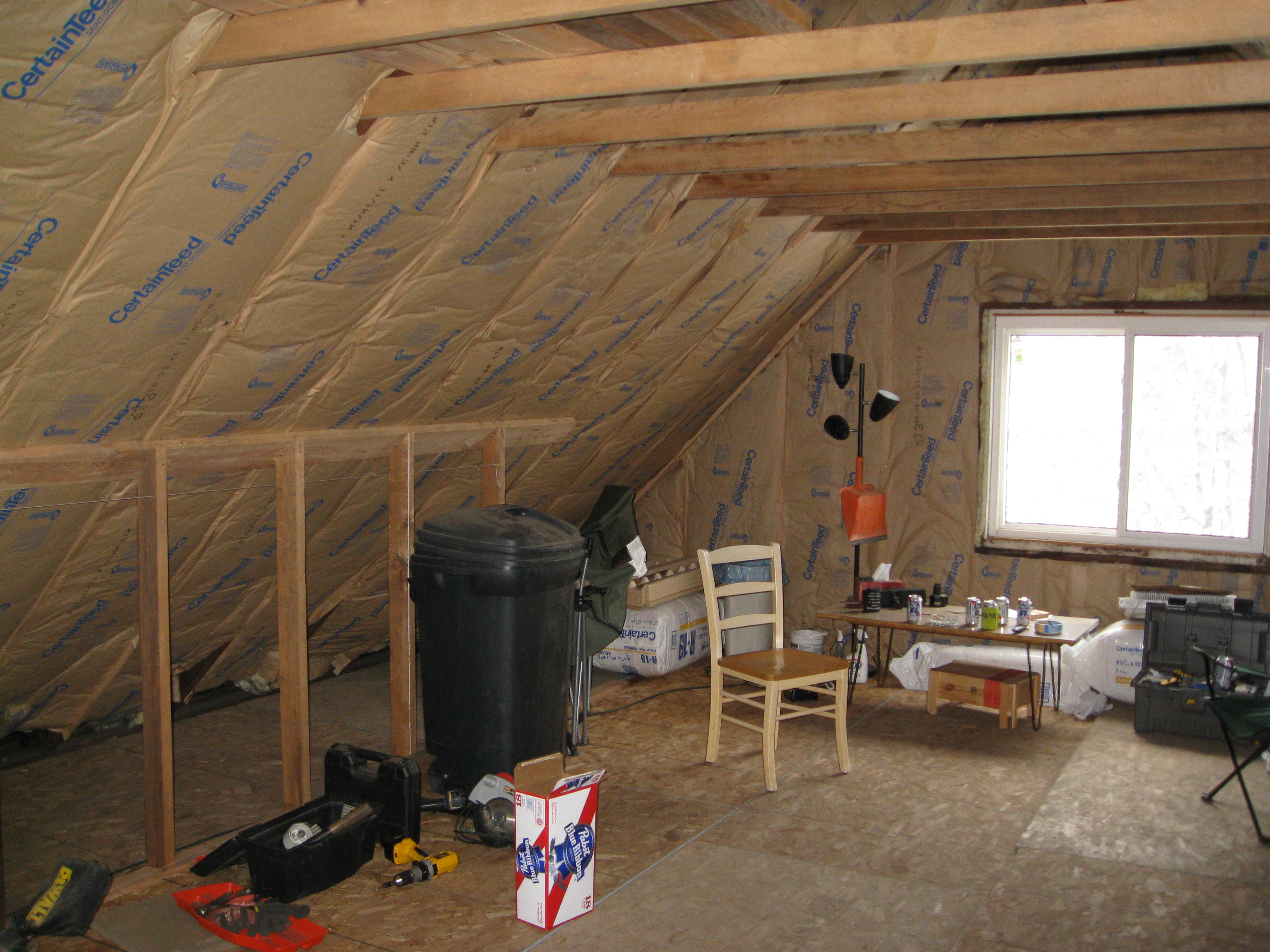Why You Should Insulate BEFORE Getting a New Furnace or AC
Home Performance has 2 sides: making the heat and keeping the heat in. When done properly, your home will be much more comfortable, healthier, longer lasting, and efficient.
Making a house perform to the best of its ability involves:
1. Insulating and air sealing it (keeping the heat in).
2. Making the heat as efficiently as possible (making the heat).
My friends at Snug Planet* in Ithaca NY posted the picture above they saw on a furnace. Note that even though it’s on a furnace, it says to ‘weatherproof’ your house first. Kind of surprising, huh?
I find many people get this backwards – they replace the furnace and air conditioner, then call me in to insulate the house. Here’s a simple analogy to explain why that doesn’t work well.
Insulation and New Clothes: The Analogy
My wife is due with our first kid in June, and we’re both planning on going on a major diet and exercise regime to get rid of some serious weight right afterwards. I have 25 pounds (ok, maybe a few more) I’d love to find a bad home for, and she’s going to lose the most weight she ever has in one day, i.e. childbirth. Then, after that momentous achievement, she’s going to get rid of the baby weight STAT.
So what if I went out right now, before losing weight, and bought a whole new wardrobe? Or my wife, for that matter? You would say I’m crazy, right? Lose the weight first, then buy the clothes like a normal person. Otherwise I’ll own a bunch of clothes that are oversized.
Guess what? It’s the same deal with insulation and a new furnace.
When you insulate your home, you reduce how much energy it needs to keep it warm. So it effectively gets smaller from a heating and air conditioning perspective. You basically put your house on a diet – it needs less energy to keep going, just like your body after a diet.
So basically, if you get a new furnace before insulation, you just bought clothes while your house is still fat, and then put the house on a diet.
Worse yet, if your furnace and air conditioner are oversized, you’ll actually be less comfortable. What?!
Furnaces & Fast Cars: The Analogy
Why would that be? I’ll give you another analogy – have you ever driven a very fast car? Did you notice how hard it was to drive smoothly and how much you jerked forward and back with the gas pedal? The reason is the car has a ton of power, so it’s very good at speeding up and slowing down quickly, but not nearly as good at driving smoothly as a more pedestrian model.
The same goes for an oversized furnace and air conditioner. When your house only needs, say 30,000 BTU to keep it warm but you have a 100,000 BTU furnace, when the furnace kicks on, it warms the house up very fast, just like flooring a fast car. There are 2 problems with this:
1. Short Cycles
The furnace doesn’t run for very long and ‘short cycles’, which can be hard on the equipment, much like only driving your car to the grocery store a few miles away, never giving it a chance to really warm up. This can shorten the life of the equipment.
2. Temperature Spikes are Uncomfortable
The temperature spikes in the house, often getting warmer than you meant it to because it is so powerful. So if you set the thermostat at 70, it may get to 71 or 72 before it shuts off again. This is trouble because it will probably drop to 67 or 68 before it turns back on again, you will feel cold from that 4-5 degree swing. We don’t notice temperature differences of 2-3 degrees, but 4-5 degrees we can sense.
Conclusion
If you have a ‘right-sized’ furnace, it will actually run more, which, believe it or not, is more efficient because it is a smaller unit. This will lead to much smaller temperature fluctuations, most likely in the 2-3 degree range that you can’t sense.
The only way to truly ‘right-size’ your furnace is to make sure your house is insulated first, then model how large of a furnace and air conditioner is necessary to keep the house warm or cool.
The best way to determine what your home needs is to get an energy audit. An energy audit is a third party, non-biased diagnosis of the energy leaks in your home. I really like them because an auditor is not selling anything, so you’ll get the straight info and not be sold to. The diagnosis is very important, because now you know what to fix without a contractor telling you what they think needs to get fixed.
Many utilities offer subsidized energy audits. Dominion‘s are $50, First Energy‘s are $100 if you live in the Cleveland area. If not, check out DSIRE, which has a nationwide listing of energy efficiency programs. A private audit will cost $500-800.
So please, once you have an energy audit, call an insulator, or better yet a Home Performance contractor to make your home more efficient, then change out the furnace. Otherwise you’re just buying ‘fat clothes’.**
Want to learn more? Give us a call at 330-524-6495 and we’ll help you make a plan to make your house better!
*Check out and like Snug’s Facebook page. They post great stuff, ahem, including this blog, and more importantly, you get occasional outbreaks of contractor trash talk involving our wives and mothers…
**By the way, if you’ve already done this and bought a new furnace before insulating, it’s not the end of the world, I’m just trying to educate on the best order of operations. You’ll need another furnace in 15-20 years, so it can get fixed then. In the meantime it has a really easy job like a Ferrari on grocery-getting duty.
Related Articles
What is an Energy Audit and Why Do I Need One?
How Much Does Attic Insulation Cost? A Helpful Guide
How Much Does Attic Insulation Cost? A Helpful Guide
Get the HVAC Guide

It's free! Make buying a new furnace, air conditioner, or heat pump less stressful.










